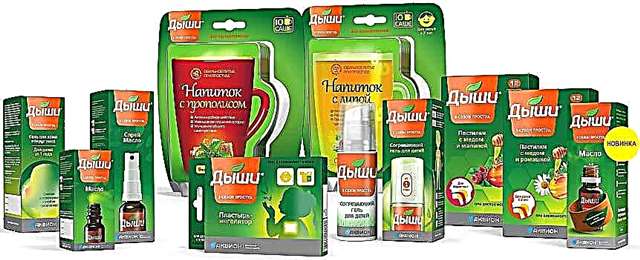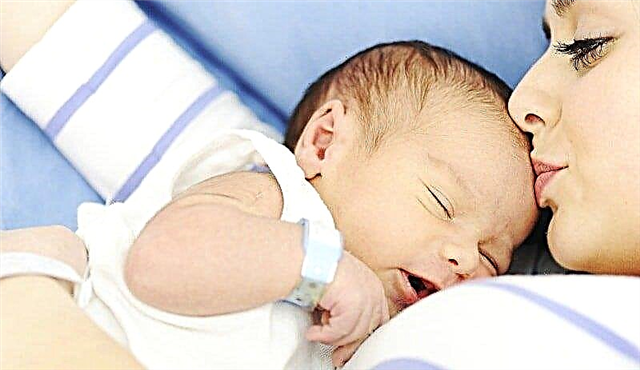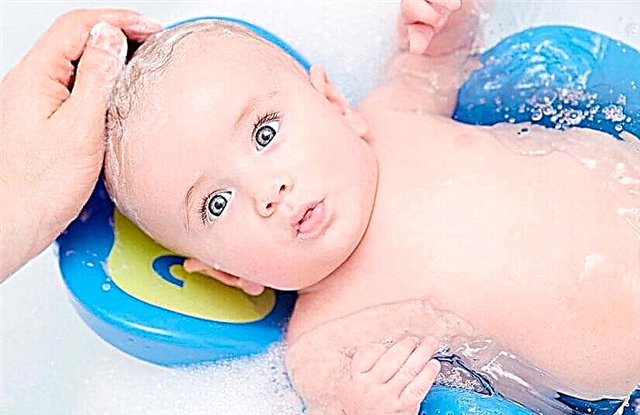In many cases, mothers resort to substituting artificial breastfeeding for breastfeeding. The reason for this may be various factors: lack of natural nutrition, frequent and severe colic in the baby, the presence of a certain disease in the mother or baby, the employment of a nursing woman, and so on. In these cases, formula milk and bottles come to the rescue. The process of artificial feeding is somewhat simpler than GW, but it has its own difficulties and nuances. How to properly feed a newborn from a bottle, how to teach a child to drink correctly from a bottle, will be discussed further.

How is artificial feeding
How to feed properly
It often happens that young mothers do not know how to properly feed a newborn infant formula from a bottle. As a result, during direct manipulation, women face various problems. The latter include colic, frequent regurgitation, poor digestibility of food and, as a result, weight loss. To avoid such phenomena, you need to water the baby correctly.
Preparing for feeding
Before bottle feeding your baby, you need to prepare for the process. The first stage of preparation involves the choice of formula and feeding container.
Interesting. For the first time, a baby is given a mixture in the hospital 2-3 hours after childbirth. At first, an unprepared baby's stomach gets used to an unfamiliar product, and often parents have to go through many options to find the best one.
Mixture manufacturers offer the following product varieties:
- Dairy. The most common option for healthy term babies. The main condition is that the child must normally absorb lactose. In this case, the choice of a specific product is very wide, and each of them may differ in composition.
- Lactose-free. If a newborn's body is not able to assimilate lactose, this substance should not enter it with food.
- With probiotics. This product improves the digestive tract. Almost all dry mixes contain a probiotic.
- Hypoallergenic. Sometimes babies have allergic reactions to certain foods. This is explained by the special sensitivity of the digestive system of a young organism. In this case, the child needs specialized food.
As for the choice of a bottle, when buying it, it is important to consider the shape, size of the container and the material from which it is made. The most common option is a container made of high-quality plastic (glass vessels are now very rare).
On a note. Plastic containers have many advantages, the main disadvantage is the release of harmful substances when heated. Therefore, it is highly undesirable to expose containers to such influences.
Modern manufacturers do not stop in the process of improving their products. To simplify the feeding process, as well as to exclude the occurrence of colic, bottles are offered equipped with a special valve that prevents air from being swallowed during sucking.

Milk formula for newborns
Important! The bottle must be kept clean, otherwise the fragile body of the baby may suffer from viral and bacterial infections.
Preparation for feeding includes several main stages, namely:
- Disinfection. The container must be thoroughly washed using a special cleaning agent. If the bottle is made of glass, it can be immersed in boiling water for a short time (1 minute is enough).
- Water. It needs to be boiled and then cooled slightly. It is recommended to use filtered water.
- Breeding. This process is carried out according to the instructions indicated on the package (it indicates how much mixture you need to take and how much to dilute it with water). The proportions must be strictly observed, since this directly affects the quality of digestion. To prepare the mixture, take several tablespoons of powder (most often 1 scoop per 30 ml of water), dilute with water, mix thoroughly (it is important that no lumps remain).
- Finding the right temperature. It is not recommended to dilute the composition with boiling water, since under the influence of high temperatures the product loses its useful properties. Too hot milk should be cooled, too cold milk should be slightly warmed up. To check the temperature, a small amount of the mixture is dripped onto the back of your hand. If the milk is warm, you can drink it.
Important! Before starting the preparation of the mixture, as well as immediately before feeding, you should wash your hands with soap and water.

Graduated bottle
Establishing communication while feeding
Young mothers who are forced to replace hepatitis B with artificial feeding are often worried about establishing an emotional connection with a child in the first months of his life.
According to experts, the exclusiveness of psychological intimacy in hepatitis B is clearly exaggerated. Tactile contact is important regardless of the type of food. If the mother takes the baby in her arms, hugs him, hugs him, says tender words, strokes the back and head, the same emotional closeness arises as with GV.
Recommendation. To strengthen an emotional bond with your baby during lactation, you need to look him directly in the eyes. Thanks to the establishment of close contact, the baby will look forward to the next "meal" not only to satisfy hunger, but also to spend time with a loving mother in an atmosphere of care, affection and warmth.
Bottle feeding technique
The IV process has a number of features and nuances that must be taken into account when feeding a baby from a bottle:
- Comfortable location for mom and baby. During lactation, the woman takes the baby in her arms. For added comfort, you can place special pillows under your elbow. The issue of comfort is especially important because the feeding process takes quite a long time.
- The child's head needs to be slightly raised and all the time to monitor its correct position.
- The container is tilted at a slight angle to make it easier for the baby to drink. The angle can change depending on whether the baby has time to swallow food (if not, the mother deflects her hand, if so, then vice versa).
- It is not necessary for the entire nipple to be in the baby's mouth during lactation. It is enough for the baby to capture only its oblong part; lips should be on the rest of the surface.
- It is necessary to ensure that the oblong part of the nipple is filled with milk mixture. Otherwise, the child will swallow air with food.
- Do not rush the baby - he should drink at a comfortable pace. If the child has finished the "meal", you can not force him to finish the remaining mixture.
- The condition of the nipple should be checked from time to time. If it is deformed, then it can no longer be used.
- Do not tighten the cap too tightly before feeding, otherwise air will not enter the teat. This creates a vacuum inside the bottle and flattens the nipple. In this case, it will be difficult for the child to draw out milk, he will quickly get tired and refuse the nipple. Therefore, after twisting the bottle, you need to slightly release the ring so that small bubbles are observed in it during lactation.

In IV it is important to follow the feeding technique
Breaks during lactation
Bottle feeding for a newborn requires breaks during the meal. During lactation, air sometimes enters the baby's esophagus, causing the baby to have a false sense of fullness. For this reason, the baby should be given time and opportunity to regurgitate air. As a result, the child will regain the natural feeling of hunger, and he will continue to drink milk with appetite.
In order for the baby to spit up, it must be held in an upright position or put on the shoulder, placing the baby's handles on his back. This position promotes light pressure on the baby's abdomen and thereby facilitates the release of air outside.
It is also recommended to give the baby a back massage or lightly pat the baby on it. It is necessary to gently press on the back of the little one by tapping the palm or stroking it. At the same time, patting should be confident and rhythmic.
Another effective way to get your baby to burp is to put him on your lap. In all cases, it is recommended to use a towel to avoid contamination of the clothing. Eructation must be induced every 60-90 ml of the mixture drunk (or more often, if the newborn is spinning, fussing).
After 2-3 minutes, you can return to feeding, even if the baby has not burped air. If the baby does not show interest in food, but at the same time begins to fuss, you can try again to provoke an eructation or check the condition of the diaper. If the baby behaves calmly and looks happy, then most likely he is not hungry and has already finished his "meal".
The psychological state of the nursing
It is very important that the adult feeding is in a good mood, calm, relaxed. Babies are sensitive to the mood of mom and dad, adopt it and begin to behave in the same way. The tense, depressed, irritated state of an adult is categorically not suitable for such an activity as feeding a baby. You need to try to relax, distract yourself from negative thoughts at least for the duration of feeding, then the baby will feel comfortable.
In what position to feed
When the preparatory stage is completed, you can proceed directly to feeding. For the procedure to be successful, the posture for the IV should be suitable, that is, as comfortable as possible for both the child and the nursing one.
Comfortable bottle feeding positions
It is recommended to pick up the baby in the same way as it was during breastfeeding. Mom or Dad puts the baby's head on the bend of his own elbow, while it should always be in an elevated position. The head of the crumbs should not be allowed to tilt back, otherwise the baby may choke. Also, the child should not turn his head while feeding, otherwise the swallowing process will be much more difficult.
Important! Many parents wonder if it is okay to bottle feed a baby while lying down. Doctors do not recommend this because it can cause fluid to leak into the middle ear and lead to otitis media.
Hold the bottle slightly at an angle and make sure the nipple is filled with the mixture. It is not allowed to place the container vertically - the baby may choke.

Correct posture for lactation
Why the right posture is needed
If during lactation the baby will lie on his back, then under the influence of gravity, the mixture will begin to intensively flow out of the bottle. Being in a horizontal position, the baby may choke and begin to choke. That is why it is very important to properly hold the baby during lactation.
Signs of excess or insufficient mixture
A signal that the baby is overeating are the following signs:
- The kid spits up often and a lot;
- Vomiting occurs after feeding;
- The child has severe flatulence;
- Infringement of children's sleep, frequent whims;
- During lactation, the child pulls the legs to the stomach, which indicates painful sensations in the intestines;
- The weight of the crumbs exceeds the norm.
Among the signs by which we can say that the toddler is malnourished are:
- Weakness and low activity of the baby;
- Bad sleep;
- Whims, frequent crying during or after lactation;
- The newborn sucks a finger, grasps the edges of the diaper, smacks his lips;
- Scanty urine and stools;
- Weight loss is observed.
What to do after feeding
Once you've figured out how to bottle feed your baby, you should figure out what to do next. It is advisable to help the child burp and check if he wants to return to eating. If interest in food is completely lost, you can set aside the remains of the formula for an hour (counted from the moment the last stage of feeding began) in case the baby gets hungry again.
Important! An hour after lactation, the remains of the milk mixture must be thrown away, and the bottle must be thoroughly rinsed. If this is not done, bacteria will begin to multiply in the milk.
It is categorically impossible to leave the bottle in the crib - the child may choke, and the use of the mixture in the supine position will provoke inflammation of the middle ear.
Artificial feeding is a less complicated process in comparison with HS, but at the same time it requires adherence to certain rules and recommendations. If you have any problems, parents can always seek help from a doctor.



